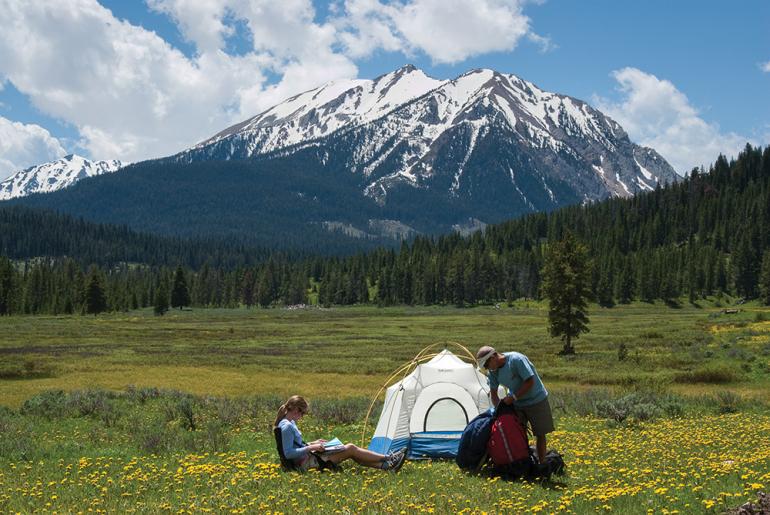The Times, They Are A-Changin'
Two decades with the CGNF.
Over the past 20 years, the Custer-Gallatin National Forest has experienced many changes. A big one was the consolidation of the two separate forests in August 2014. The now 3.1-million-acre Custer-Gallatin stretches from the Idaho border near West Yellowstone into western South Dakota, and includes two very distinct ecosystems.
Recreation continues to grow and is a driving economic engine in Montana. The Forest plays a key role in providing recreation opportunities and supporting our local economies. The Custer-Gallatin is the most heavily visited national forest in Montana, with Hyalite Canyon alone hosting over 50,000 visitors per month during the summer.
The technology evolution continues and provides new ways to enjoy public lands. Lighter hiking gear makes longer backcountry hikes possible in a single day. Motorized and mechanized equipment provides visitors access to new areas that were unattainable just a few years ago. Examples include the immensely popular side-by-sides and fatbikes.
The Yellowstone grizzly-bear recovery and subsequent habitat expansion across the Greater Yellowstone Ecosystem has been significant. Working with other agencies, businesses, organizations, communities, and partners, we are truly making a difference for bears. Another huge win for the ecosystem is the continued and successful work on native-cutthroat-trout restoration and watershed-health improvements. Over the past 20 years, the Forest—with the help of many partners—has restored over 300 stream miles and 100 lakes in the ecosystem.
There have been several major planning efforts over the last 20 years that guide and inform forest management, including travel-management planning and forest-plan revision. Over the last four-plus years, thousands of people have been involved in our latest plan-revision effort. The revised plan should be released in the next few months and will guide and inform forest management for the next 15-plus years. We appreciate everyone who has participated in this Herculean effort.
The need for forest restoration and fuels treatments has grown over the past 20 years, and more homes being built in urban-interface areas has only intensified it. These treatments reduce the impacts of insect and disease outbreaks, reduce fuels to address wildland-fire or urban-interface concerns, and help support our local economy.
Among all this change, some things remain constant. For example, providing livestock-grazing opportunities across the Forest, particularly in the eastern districts, continues to be a high priority.
One of the most significant changes over the last 20 years has been the involvement of partners, organizations, and communities in natural-resource management. The endless hours of volunteer work, the financial support, and the collaborative involvement are the key to our overall success. And for this, we thank you.
Marna Daley is the public-affairs officer for the Custer-Gallatin National Forest.











